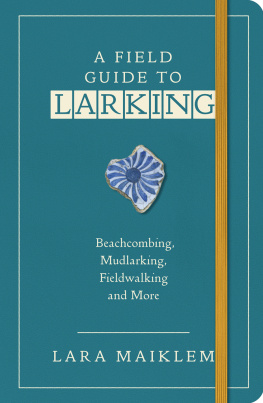
Dedicated to Foodspotters around the world
Copyright 2014 by Alexa Andrzejewski.
All rights reserved. No part of this book may be reproduced in any form without written permission from the publisher.
ISBN: 978-1-4521-1987-8 (pb)
ISBN: 978-1-4521-3008-8 (epub, mobi)
Designed by Alice Chau
Text by April V. Walters
Photography courtesy of Foodspotting, LLC,
in accordance with Terms of Service.
Front cover (left to right): Khanom Krok (spotted by Nutoey), Bibimbap (spotted by Emily Ng), Churros con Chocolate (spotted by Johnny Ferio)
Back cover (left to right): Shakshouka (spotted by Pinrat), Cacio e Pepe (spotted by Tantissimo), Momo (spotted by Kamol Chinupagarnbong), Brek (spotted by Meem)
Android is a registered trademark of Google, Inc. Foodspotting is a registered trademark of Foodspotting, LLC. iPhone is a registered trademark of Apple, Inc. SPAM is a registered trademark of Hormel Foods, LLC.
Chronicle Books, LLC
680 Second Street
San Francisco, California 94107
www.chroniclebooks.com
Preface
Dear Foodspotter,
Have you ever heard of tteokbokki (Korean rice sticks in red sauce)? Kunafa (an Arabic cheese-filled shredded wheatlike pastry)? Or bubble and squeak (a British patty made of leftover potatoes and cabbage)? Growing up in Pittsburgh, Pennsylvania, I knew my meat and potatoes well. And while childhood favorites like pierogies and schnitzel will always have a place in my heart, a few trips during the past few years have opened my eyes to a world of dishes I never knew existed.
A few months after a particular trip to Japan that introduced me to the Osaka-born dishes takoyaki (literally fried octopus) and okonomiyaki (which are savory pancakes), I woke up with the idea to create a field guide to fooda visual guide to dishes you should know about. Given the growing interest in food that I observed among friends and family, I wanted to introduce people to some of the dishes Id discovered over the past few years and encourage people to track them down and try them locally. It was to be like a bird guide or passport, only for food!
But when I realized there was no easy way to search for specific dishes nearby, I got sidetracked: The book idea evolved into an app idea, and the Foodspotting website and mobile apps were born. I teamed up with my cofounders, Ted Grubb and Soraya Darabi, and in January 2010, we launched the first app for finding and sharing great dishes, not just restaurants. Three years later, Foodspotters had contributed more than 3 million photos of dishes from around the worldfrom our childhood hometowns in Pennsylvania to food capitals like Tokyo and Istanbuland the time seemed ripe to create this book.
While cataloging every dish in the world is a task better suited to the infinite canvas of the Web, we did our best to select a few of our teams favorite dishes from a diversity of countries and regions and illustrated them with real photos from Foodspotting members, taken in the country of origin wherever possible. Start your Foodspotting journey by turning this page to discover The Foodspotting 75. This interactive checklist includes all 75 dishes paired with the region with which they are most closely associated. Locate the dish you want to try and turn to the corresponding entry, where youll find descriptions of the dishs history and origins, plus common identifying features so youll know what to look for at restaurants and food stands. Use the to record details of your encounters with each dish, like where and when you sampled it and what you thought of it.. We hope that this field guide will equip you to try these and other new dishes for yourself and keep track of your own unique experiences.
We look forward to seeing what you spot!
Alexa Andrzejewski
Cofounder of Foodspotting
with April V. Walters, editor and foodspotter
www.foodspotting.com
The Foodspotting 75
To download and print this Fill-in Form, type www.chroniclebooks.com/landing-pages/pdfs/foodspotting_journal_entry.pdf into a Web browser from which you can print (e.g. desktop or laptop computer connected to a printer).
Open PDF and resave PDF onto your computer.
Open resaved PDF and choose Print.

/ MEAL
Adobo

SPOTTED BY JOANNA CHOA
ORIGIN: Philippines
TYPICAL INGREDIENTS: Chicken, vinegar, garlic, soy sauce, bay leaves
/ah-DOH-boh/ Peanut butter and jelly, ketchup and fries, vinegar and garlicsome flavors just belong together. In this quintessential Filipino dish, vinegar and garlic make a marinade with bay leaves, pepper, and soy sauce. Meat, typically chicken or pork, slowly simmers in the marinade until it is fall-off-the-bone tender, and then its served over white rice. Vegetables can also be cooked this way. Adobo flakes feature leftover adobo meat that has been shredded and pan-fried. Spanish explorers encountered this dish in the Philippines a long time ago and applied their name for marinade to it. Adobo variants can also be found in Peru and Puerto Rico.
/ DESSERT
Alfajor

SPOTTED BY BABARIZAL
ORIGIN: Spain, but considered Argentinean
TYPICAL INGREDIENTS: Cookies, dulce de leche, powdered sugar or coconut
/al-fah-HOAR/ Originally from Spain, the enormously popular Argentine alfajor features a thick layer of dulce de lechecaramelized sweet milk sandwiched between two shortbread-like cookies. There are a multitude of variations: some may be coated on one end in powdered sugar, while others feature the edges of the dulce de leche filling rolled in coconut. The Spanish version is round like a cigar, rolled in powdered sugar, and made with honey, nuts, and spices. Nibble carefully as you enjoy an alfajor, for it is light and delicate. Youll likely have to dust crumbs off your shirt after youve enjoyed onebut youll agree theyre worth the mess!
/ SNACK
Arepas

SPOTTED BY JOANNA RIQUETT
ORIGIN: Venezuela
TYPICAL INGREDIENTS: Cornmeal or wheat dough, fillings
/ah-RAY-pahs/ This round South American bread is served split open and stuffed, making for an often unmanageable sandwich. Venezuelan arepas are served at night. They may be small or large, but are thick enough to have both a crisp outside and soft inside. Served with savory fillings such as cheese, vegetables, meat, and sauce, just one arepa will satisfy your need for a salty, fried snack. Colombian arepas are eaten during the day and feature bread that is thicker than a tortilla. They might be served plain or with fillings such as scrambled eggs, butter, and cheese.
/ DESSERT
Baba

Next page

















